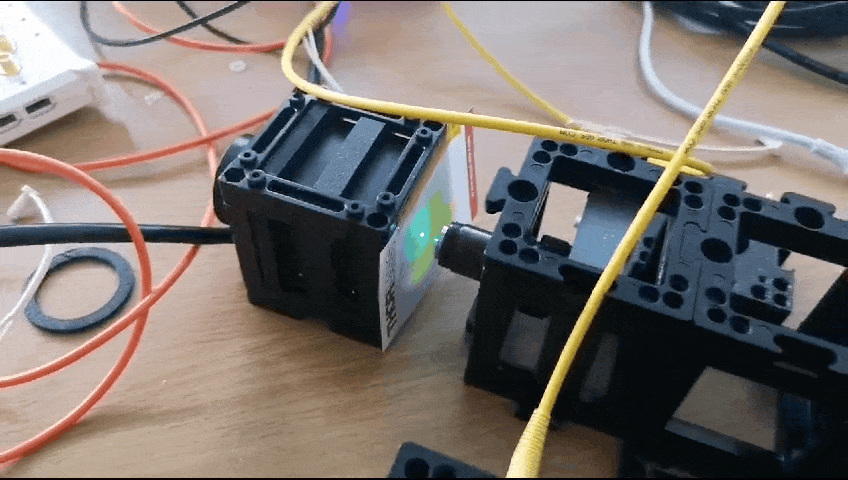Introduction
In the dynamic field of fluorescence lifetime imaging microscopy (FLIM), openUC2 by FLIMLabs is at the forefront of innovation, forging a path toward accessible, advanced optical solutions. Our collaboration with FLIMLabs is redefining what’s possible in optical rapid prototyping, offering tailored solutions that address both high-end research requirements and grassroots educational needs.
Enhanced Capabilities and Integration
Our partnership has birthed a powerful platform that allows users to assemble custom optical systems using an expansive (still low-cost) library of components tailored for specific FLIM LABS applications. Among our latest advancements, we offer a cost-effective solution for spatially-resolved FLIM measurements with the turn-key solutions offered by FLIMLabs. This system features a sub-micrometer precise XYZ stage and achieves a frame rate of about 3fps at a FOV of 100×100 pixels with a 20 µs pixel dwell-time.

We are excited to announce that we are nearing the completion of a state-of-the-art galvo-scanning module. This enhancement aims to increase the speed of data acquisition while reducing mechanical stress on samples, seamlessly integrating with existing FLIM LABS modules to adapt excitation and emission fibers easily. The current implementaton of stage scanning on the prototyping instrument proved that the general technique is working, but the mechanical stress on the system and sample leads to a loss in quality which we hope to address when we use galvo scanners.

A first result of fluo-pen labelled paper using the stage scanning device
Ready-to-Use FLIMscope: Democratizing FLIM Technology
The FLIMscope, still in its developmental infancy, represents our commitment to democratizing access to advanced FLIM technology. This compact device is being designed to perform fluorescence lifetime measurements in various environments—from detecting microplastics in marine settings to fostering hands-on learning in classrooms. Our commitment to open-source is unwavering, with extensive resources available on our GitHub repository for those interested in contributing to or learning from our progress.

The first prototype of the “FLIMscope” that has the UC2 building blocks inside.
Technical Specifications and Future Directions
Our system is equipped with high-quality components such as a 60x NA0.85 or 100x NA1.25 oil immersion objectives, an IMX226 USB3 camera, and an XYZ stage with a 300nm step size. Control options are versatile, ranging from ImSwitch and REST protocols to WiFi and even a PS4 controller.
Moving forward, we aim to integrate a compact scanning/descanning module within our FiveD XYZ stage scanning microscope. This integration will facilitate a plug-and-play setup with the FLIM mode, enhancing usability and functionality. ImSwitch continues to play a crucial role in this integration, offering a cohesive module implementation for streamlined control.
Open Developments
We take open-source serious. Therefore, we involve the community in the open development process and ask for feedback and participation. Our forum is aside from the github pages the first place to interact with the development process. Have a look here if you want to learn more.
The first results of our open-source galvo scanner look very promising and we can render the fluorescence response using the FLIMLabs card.

The next step is to integrate this into a stand-alone module to increase mechanical stability. The entire system in cube-formfactor looks like the following setup, where every dip corresponds to a line signal. We “image” a fluorescently labeled piece of paper. The next part will be the correct trigger format for the FLIMLabs card. The openly developed firmware for the ESP32-based laser scanner can be found in our Github repository as always https://github.com/beniroquai/esp32-laser-show/.

Conclusions
Our collaboration between openUC2 and FLIM Labs is more than just a venture into new technological territories—it’s a commitment to making sophisticated scientific tools accessible and manageable. We believe this can be a significant contribution to quantitative biology, especially in low-resource settings and educational environments. For more information on our projects or to get involved, visit openUC2’s website.
The open-source ImSwitch software has a dedicated FLIMLabs Plugin (https://github.com/openUC2/imswitch-flimlabs/) that is also developed openly. With this all instrument control is taking place in one workflow-window.

The image displayed is a mockup, which we hope to replace with actual scans in the near future 🙂.
Stay tuned for more updates as we continue to innovate and expand the horizons of optical imaging and microscopy.


